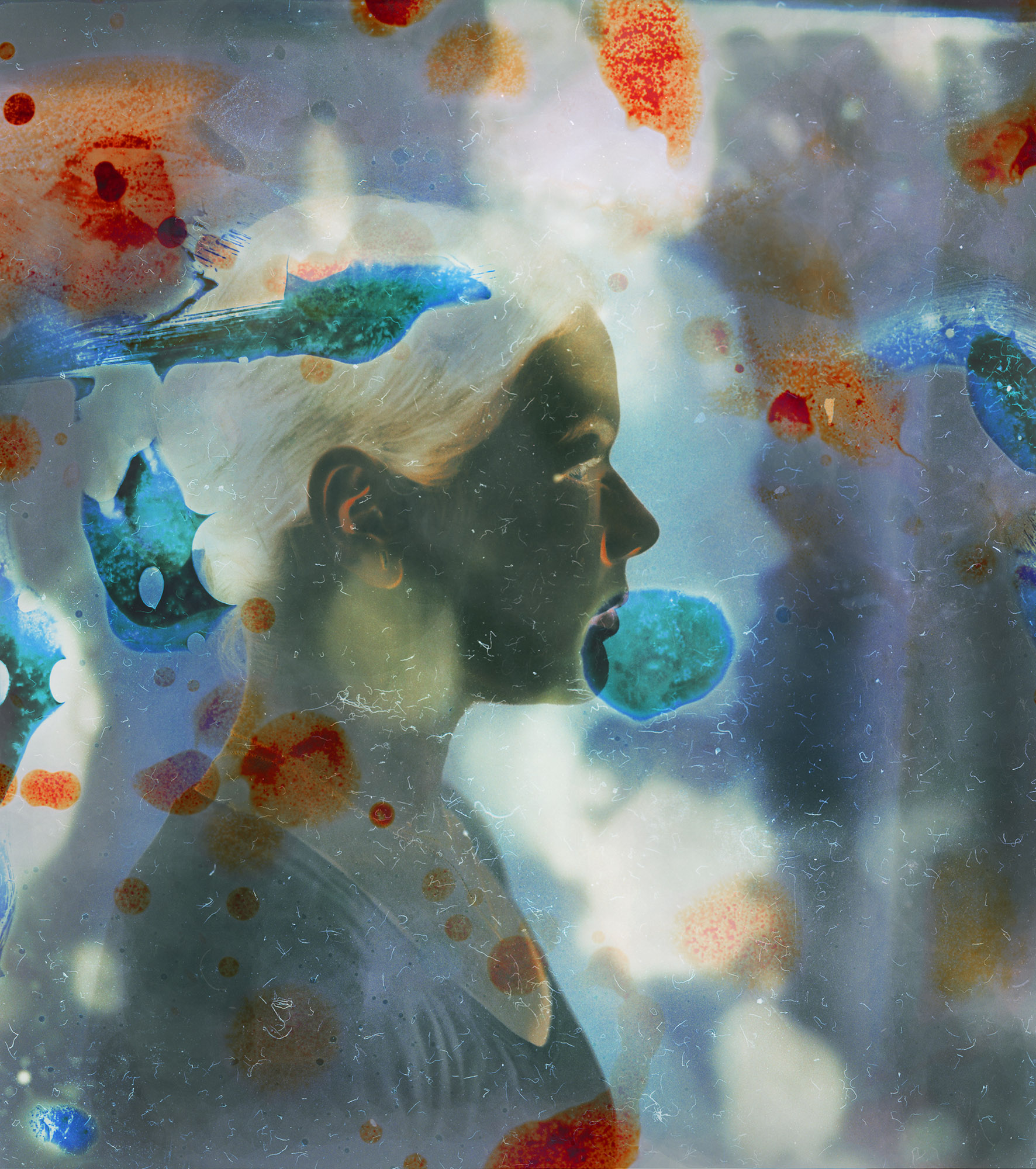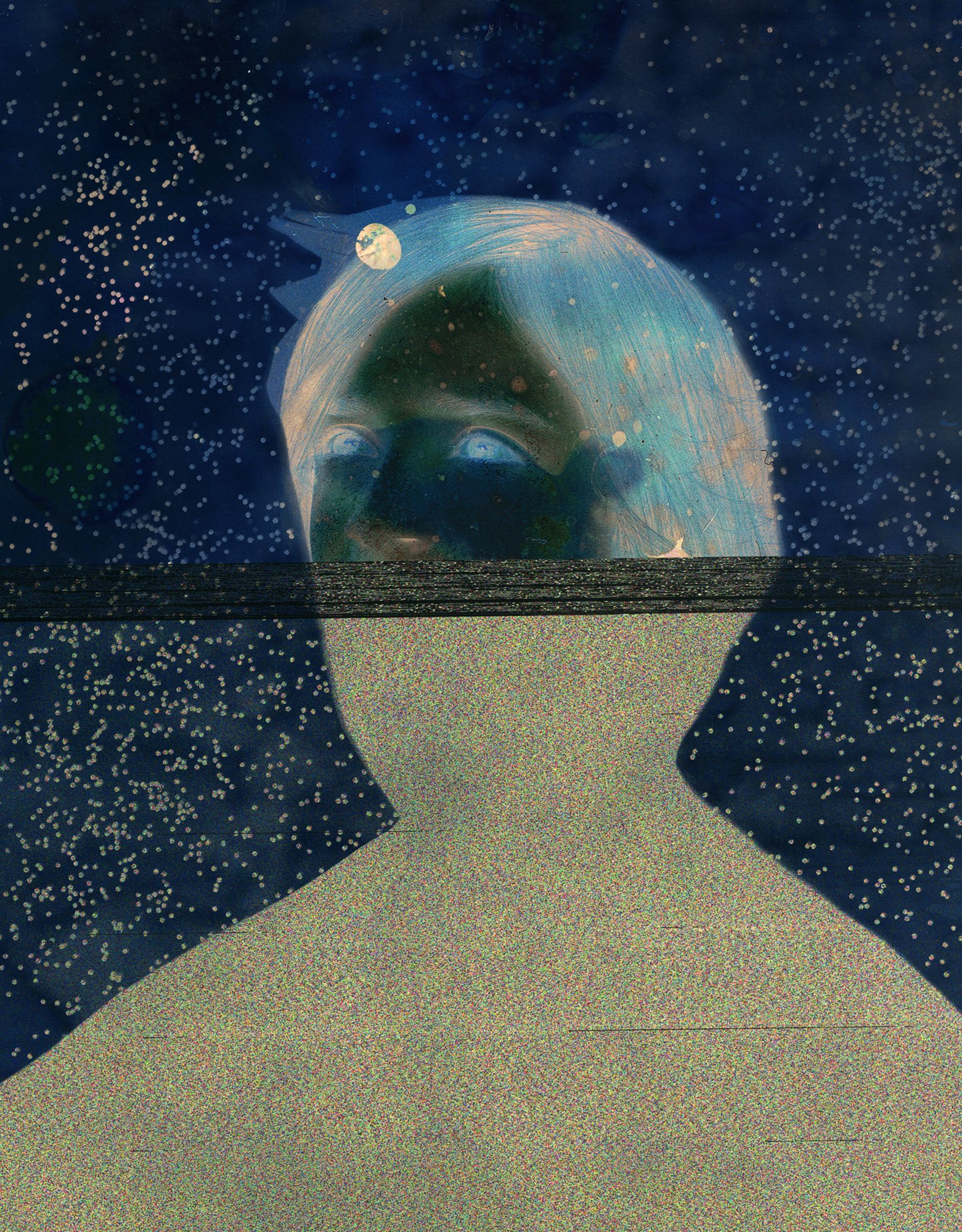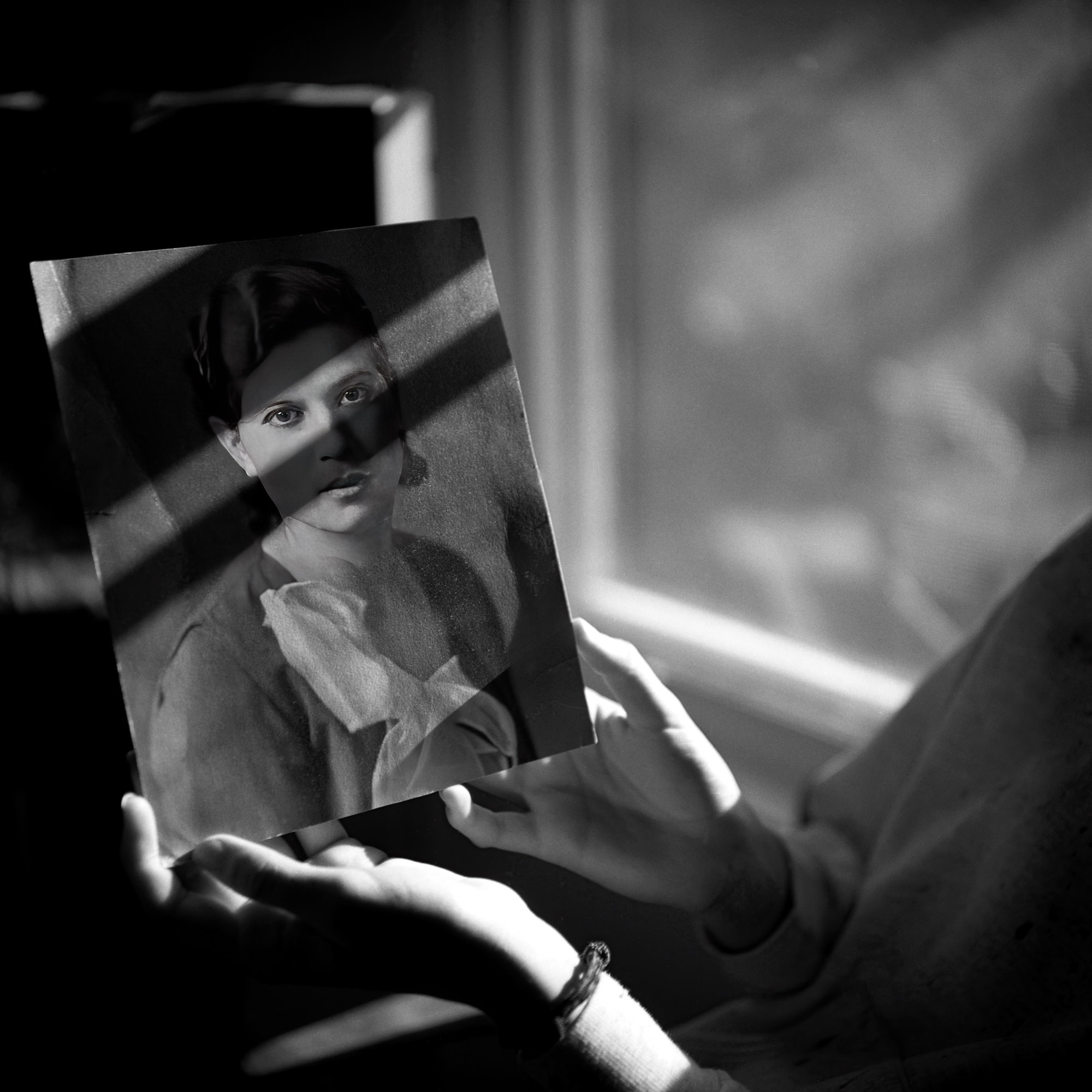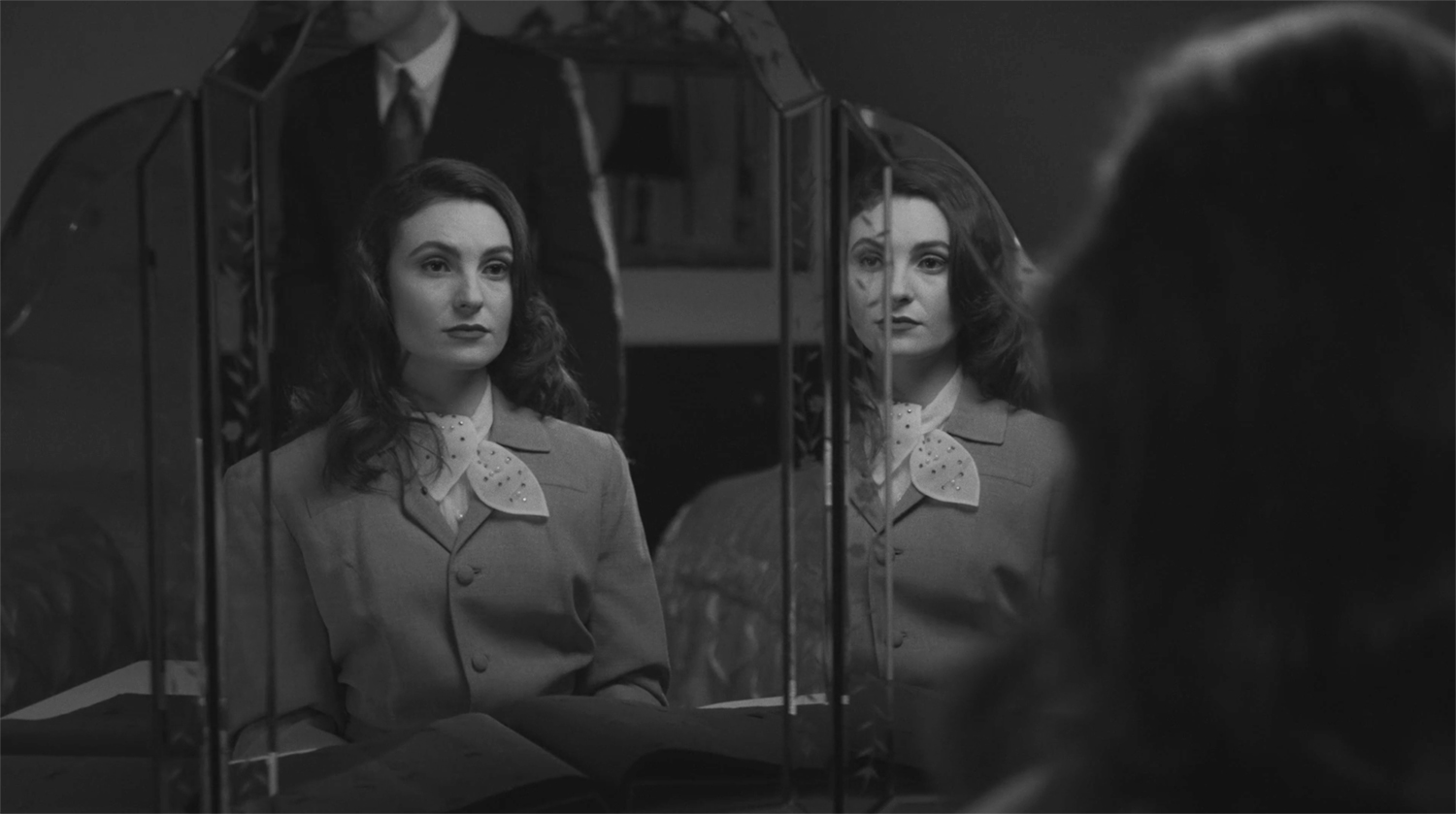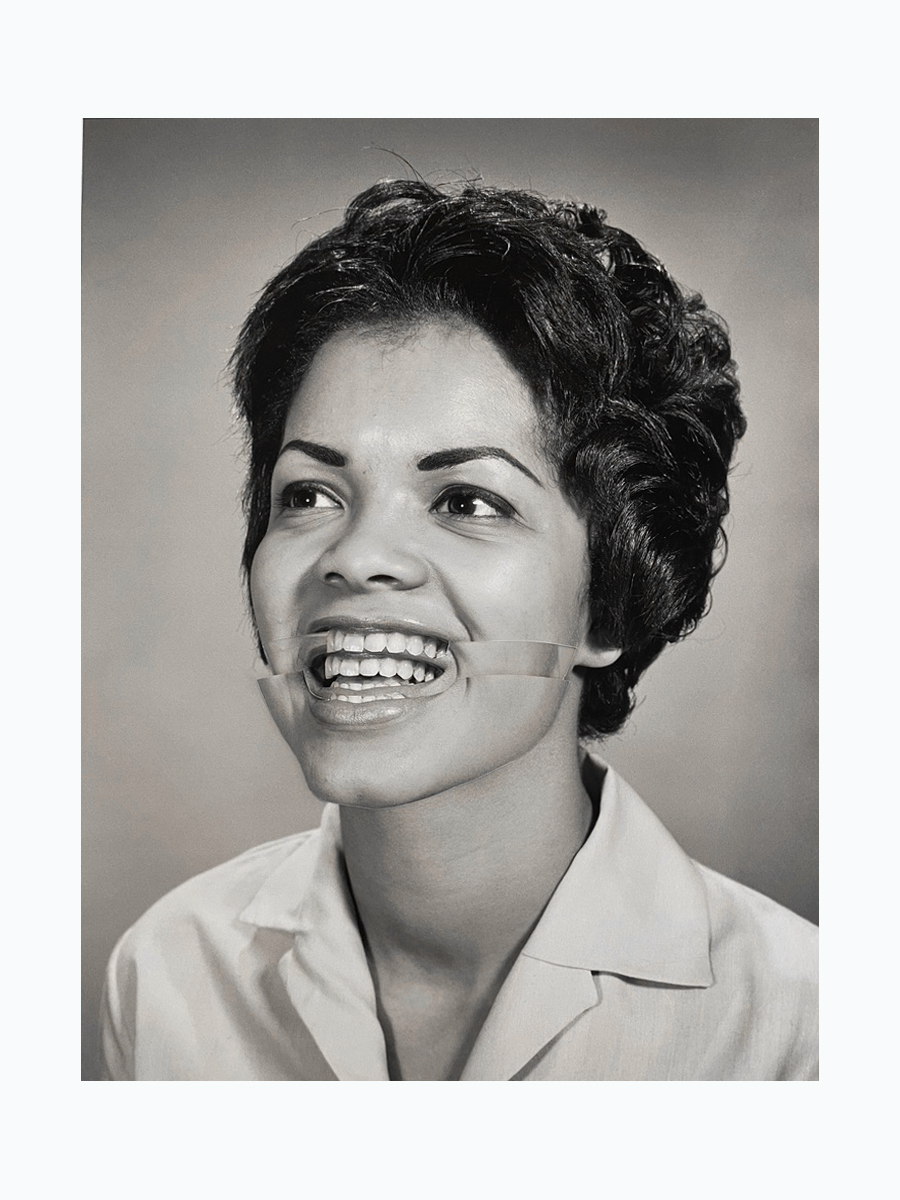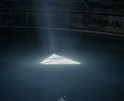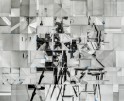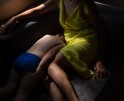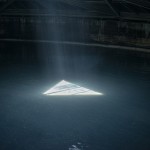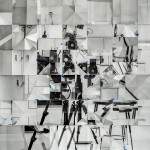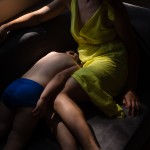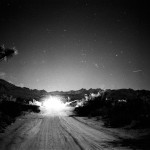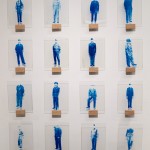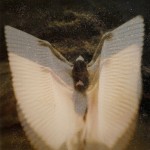Aline Smithson: The Ephemeral Archive
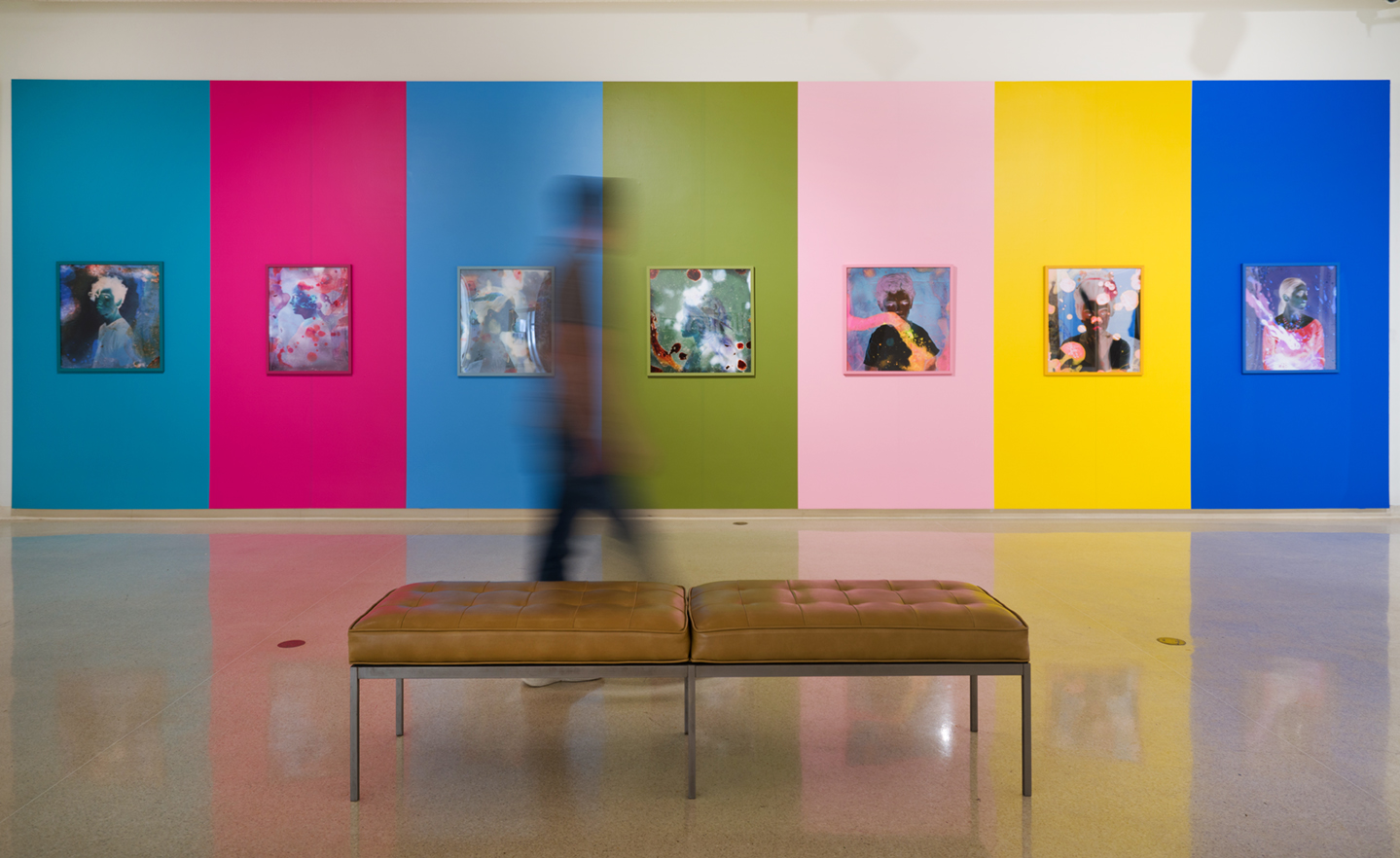
© Installation view of Aline Smithson’s The Ephemeral Archive at the Brand Library & Art Center, Photo by Adam Kolkman
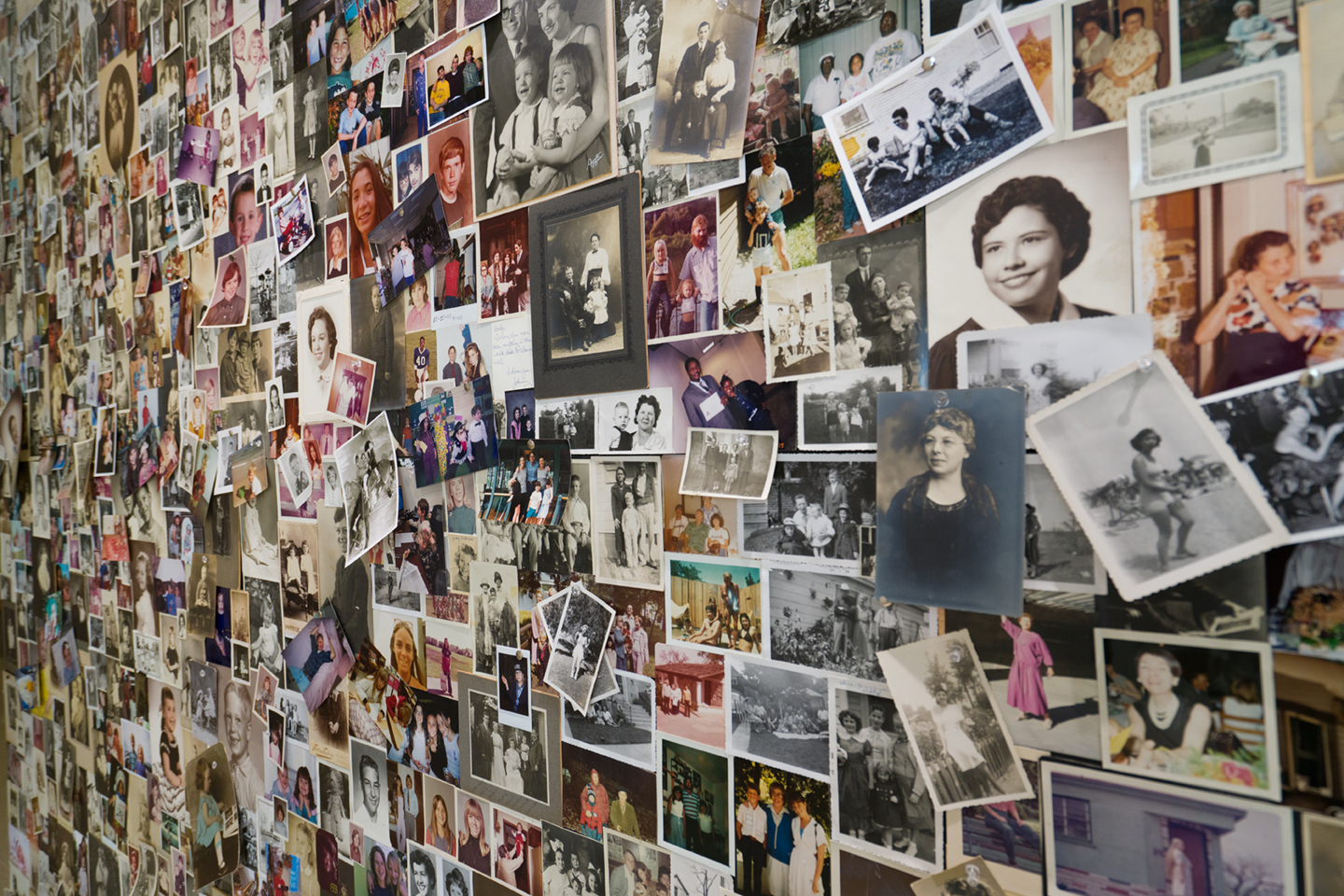
© Installation view of Aline Smithson’s The Ephemeral Archive at the Brand Library & Art Center, Photo by Adam Kolkman
“The neuroscientist and author David Eagleman has written that we all die three deaths: “The first is when the body ceases to function. The second is when the body is consigned to the grave. The third is that moment, sometime in the future, when your name is spoken for the last time.” I would say there’s a fourth: the moment the last remaining picture of you is seen for the final time. These found photographs not only remind me of this delicate thing we run both toward and away from — time — but they also hold something else. The humbling, steadying truth that, one day, that’s all we’ll be: a photo.”. – Bill Shapiro, from The Strange Lure of Other People’s Photos, New York Times Magazine
Aline Smithson has long been considering how photographs move through time—as conveyors of memory, history, and being. The Ephemeral Archive, her new exhibition with Los Angeles Center of Photography at the Brand Library & Art Center, is an expansive and conceptual exploration of the power that family photographs hold and the alarming potential of losing our visual legacies to platforms that corrupt, potentially losing whole histories of being in the process.
Visiting this show was an absolute thrill, not only to support my long time friend and mentor, but to relish in the breadth of her deeply engaging work. From large scale photograph installations, to interactive performance pieces, and an experimental film; each piece is a profound comment on impermanence and approaches this grave topic with style and wit. Smithson has a knack for visually representing conceptual themes with deft skill. She distracts us with beauty and humor while delivering a bitter underhand of truth. The show is running through February 24th 2024 and I look forward to revisiting the work again before it too slips through time.
The following is a transcript of a conversation between Tracy L Chandler and Aline Smithson.

© Installation view of MOTHER from Aline Smithson’s The Ephemeral Archive at the Brand Library & Art Center, Photo by Adam Kolkman
TLC: First off, congratulations on this exhibition! There is much to be celebrated and discussed. Can we start with how this show came to be?
AS: Rotem Rozental, the Executive Director and Head Curator of the Los Angeles Center of Photography presented me with the opportunity to have a solo exhibition to celebrate my 22 years of teaching with LACP. Rotem found a 5,000 sq foot space at The Brand Art Center and I thought that it would be wonderful to give some of the space to photographers who have mentored or studied with me. Rotem curated the exhibition, If Memory Serves, that speaks to technology, memory, and more. My exhibition, The Ephemeral Archive is under the umbrella of the larger show and takes up about half the space.
TLC: Your show, The Ephemeral Archive, contends with the impermanence of photographs, the one place we often look to preserve our memories and, by proxy, our loved ones. We have all heard the stories of a devastating house fire where generations of scrapbooks go up in smoke. But even the accidental deletion from an errant phone swipe can send a wave of panic through the body. I am curious if there is a specific photographic loss that started you down the path of making this work?
AS: The first body of work I made was in 2005, titled People I Don’t Know. That was the beginning of thinking about the loss of family archives. In 2017, I began thinking about the future of family photographs after noticing that my children had no physical documentation of their lives and I created the series, Fugue State, to speak to the loss of the tangible photograph. In 2021, after the damage of a hard drive, I realized that digital files also have a shelf life and there is the possibility that the most documented generation in history will have nothing that will last into the future, and created the series, Fugue State Revisited. We’ve already lost the paper trail of our lives, where letters are a thing of the past, and as technology rapidly changes, we are losing our histories at a rapid pace.
TLC: We are. I have stacks of CD-roms with early digital images that demand a now defunct software to access them. So much is lost in the turnover of the tech. But even physical photographs don’t escape degradation and discard, except for the rare few that happen to be found. As one enters the exhibition, they are confronted with a deluge of found photographs, a wall pasted with thousands upon thousands of family snapshots and other vernacular photographs.
AS: My initial interest in found photographs came in the 1980’s when I was living in New York City. I would find photographs on the ground on an almost daily basis. It engaged my antenna to begin to consider what happens when photographs are untethered from their owners/families. When I moved back to Los Angeles in the early 1990’s, I continued to find photographs as it was still a time where photographers and enthusiasts were taking their images to the drug store to get developed.
One great find was a strip of negatives that I found on the ground and I took it to my local drugstore. The images revealed a guy really high on cocaine snorting lines off his gold-framed portraits of his parents–he was wild eyed and trust me, I was really excited by the discovery. I have to admit, I have even picked up torn photos slightly covered with vomit, seemingly after a break-up. My son found a disposable camera on his camp bus and proudly gave it to me–the photos revealed a teenager giving everyone the finger. All these small stories were waiting to be discovered.
TLC: You have amazing luck! Were any of these on that wall in the exhibition? I noticed many of the images were sequenced into loose categories…couples, families, kids, pets, but I missed the vomit and coke binge section. It is so interesting to consider all of these moments are totally untethered from their original context.
AS: No, I didn’t use those photos…those I am keeping! In addition to collecting found photographs, I also began collecting photo albums. I’ve learned a lot about the market for old photographs. Many sellers are stripping photo albums of their photographs and selling them individually and then they sell the empty photo album. I’ve looked at hundreds of photo albums for this project and began to think about what we choose to document and remember. There is a ubiquitousness to all of these photographic legacies.
I gathered thousands of photographs for this installation–many were donated by other photographers (I have to give a shout out to the Peter J. Cohen Collection and to Caleb Cole for sending me boxes of images). One afternoon I invited a group of photo friends over to help me sort the work into categories: babies, parents with babies, small children, teenagers, portraits of adults, graduation, weddings, parties, pets, etc. I then spent days creating a 16 ft wall of those categories. With each photograph I glued down, I read the notations on the back and realized I would be the last person to witness the captions. It was a profound and psychic feeling.
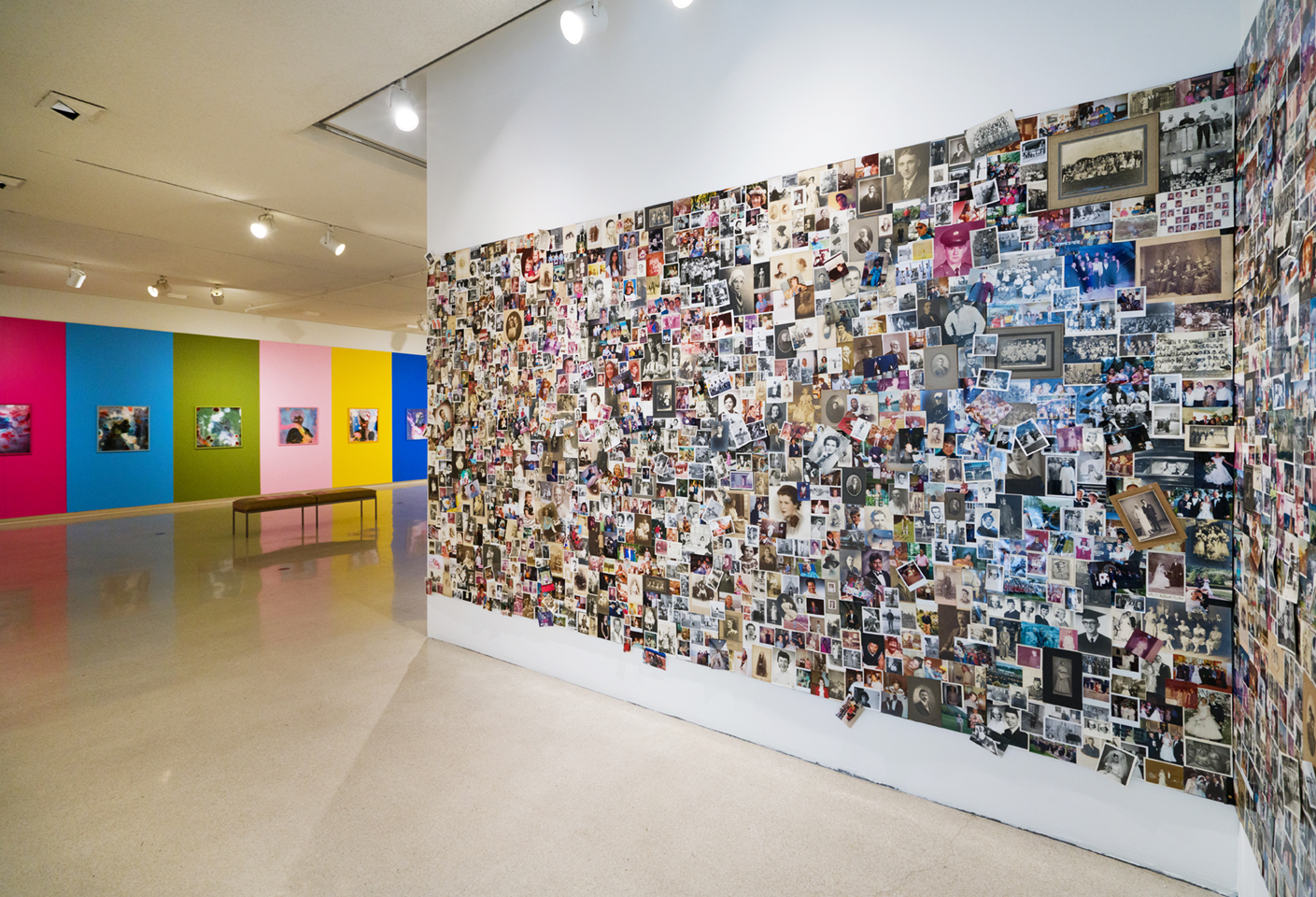
© Installation view of Aline Smithson’s The Ephemeral Archive at the Brand Library & Art Center, Photo by Adam Kolkman
TLC: Totally profound. It’s almost like a mini death, an end to that moment preserved as someone’s memory. It is so interesting to consider all of these moments are now totally untethered from their original context. You address this in your first project People I Don’t Know. Can you talk about that work?
AS: After I moved back to Los Angeles, I went to a lot of flea markets and thrift stores. I kept noticing photographic portraits for sale and it set off an alarm in my mind that these photographs were no longer in a family archive. I wanted to create a body of work that allowed the subject to be seen again. For the series, I asked someone who was the same age and gender as the person in the portrait, to hold the photograph, so that psychologically you would assume that the person in the photograph was the person holding the photograph.
I created this work during a prolific time in my art making and it was a series I didn’t really put out into the world until years later, as I was busy promoting other projects. It’s great to start the exhibition with a project from long ago. I also updated the series by cutting the edges of the photographs in the image so the photograph would become more three dimensional
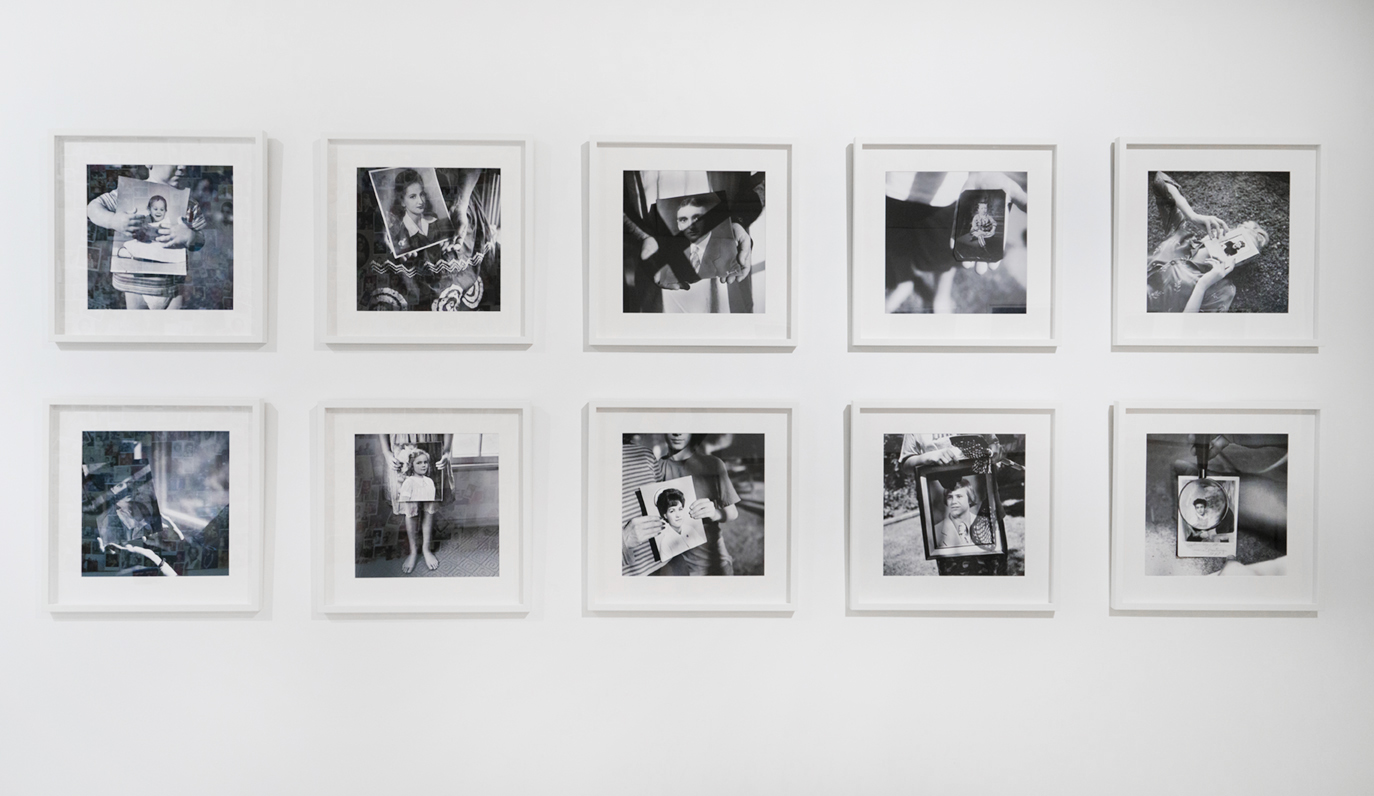
© Installation view of Aline Smithson’s The Ephemeral Archive at the Brand Library & Art Center, Photo by Adam Kolkman
TLC: Yes, I love that you included early work in this exhibition and it is very cool to see how over time you have returned to the theme of the impermanence of the photograph in so many different ways. We’ve mentioned Fugue State and Fugue State Revisited in which you work with damaged source material, whether that be film negatives or digital files, neither is fail-safe. These projects have both been very successful and garnered international acclaim. I loved seeing this work installed at The Brand in a new and fresh way…the colored walls are such a bold move! How involved were you in the curation of the show and design of the space?
AS: I spent about six months conceiving the exhibition. I had a walk-through of the space in the spring and figured out how the exhibition could evolve through time and concept. I was so excited to be given a huge space with multiple rooms (including a video room) and consider the flow and the installation possibilities. I wanted to bring in the elements of color, play with scale, and use conceptual approaches that speak to these issues. It was wonderful to have Rotem to bounce ideas off and fortunately she only had to pull me back a few times!
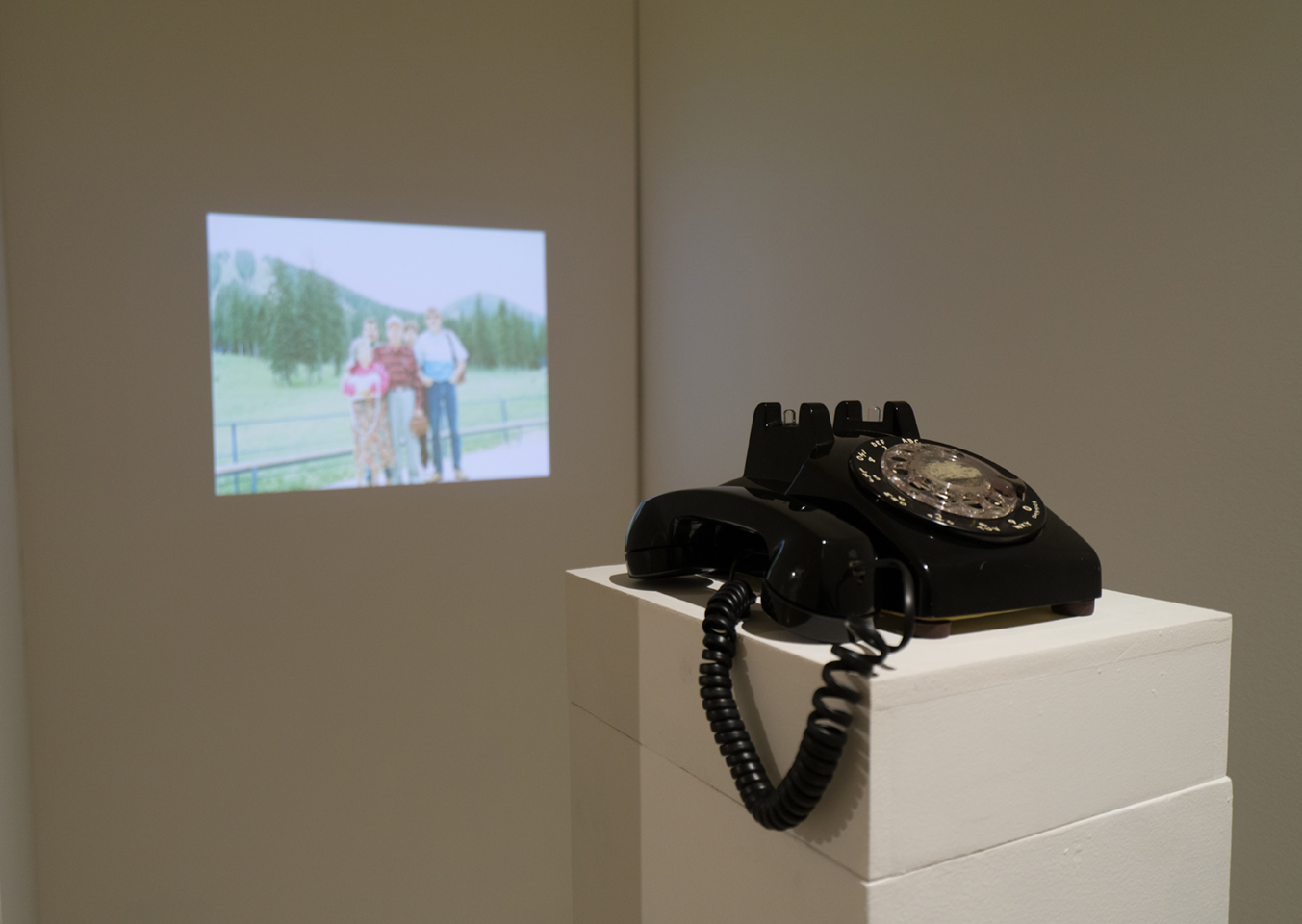
© Installation view of Conversations with the Past, a collaboration between Aline Smithson and Víctor Josué Quintana Ramos in the The Ephemeral Archive at the Brand Library & Art Center, Photo by Adam Kolkman
TLC: You also made many new pieces specifically for this show, many that broadened outside of flat photographic objects. From an interactive sound installation to a furnished set-piece worthy of a Hollywood movie set, are there any pieces that are your particular favorite?
AS: These are all favorites of mine. I also made a piece titled, MOTHER, where the photograph gradually disappears to speak to what happens with memory when we lose our photographic archives. It turned out to be a powerful metaphor and numerous people were in tears after seeing it.
I had the great pleasure to meet Victor Josué Quintanos Ramos at the Medium Portfolio Reviews. He shared a project with me where he had created a cube that projected a different photograph each time it was picked up. In chatting about this concept in terms of memory, we realized we could create something for the exhibition that allowed for memory and storytelling, so we created a phone that dials into the past, allowing us to have conversations with people in our lives, living and deceased. My daughter recorded a call to me as a little girl, and I recorded conversations with my parents and a friend who passed away. Victor recorded conversations to his family in Spanish. And we also allowed AI to have a conversation with some vintage photos. When you dial a number, you hear a recording and an image is projected.
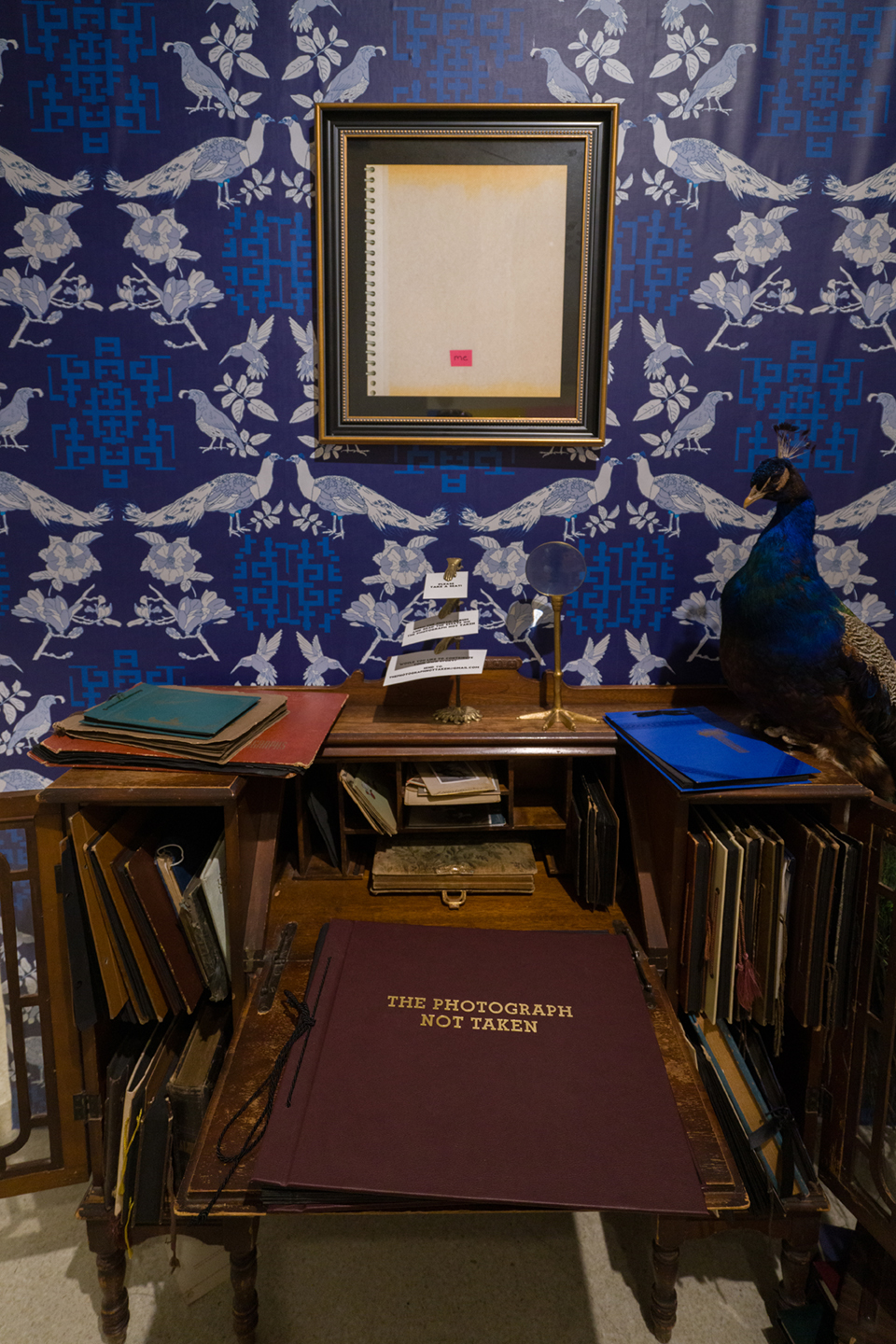
© Installation view of The Photograph Not Taken, part of the The Ephemeral Archive at the Brand Library & Art Center, Photo by Adam Kolkman
Another avenue for thinking about the loss of family archives came from finding photo albums where the photographs were lost but the captions are still there. I also created an installation of an office filled with piles of photo albums, a taxidermy peacock, and a photo album that I had made that has the title, The Photograph Not Taken on the cover. For years, I have asked photographers to write an essay about a photograph they didn’t take and I filled the album with these stories and encouraged viewers to sit down and read them.
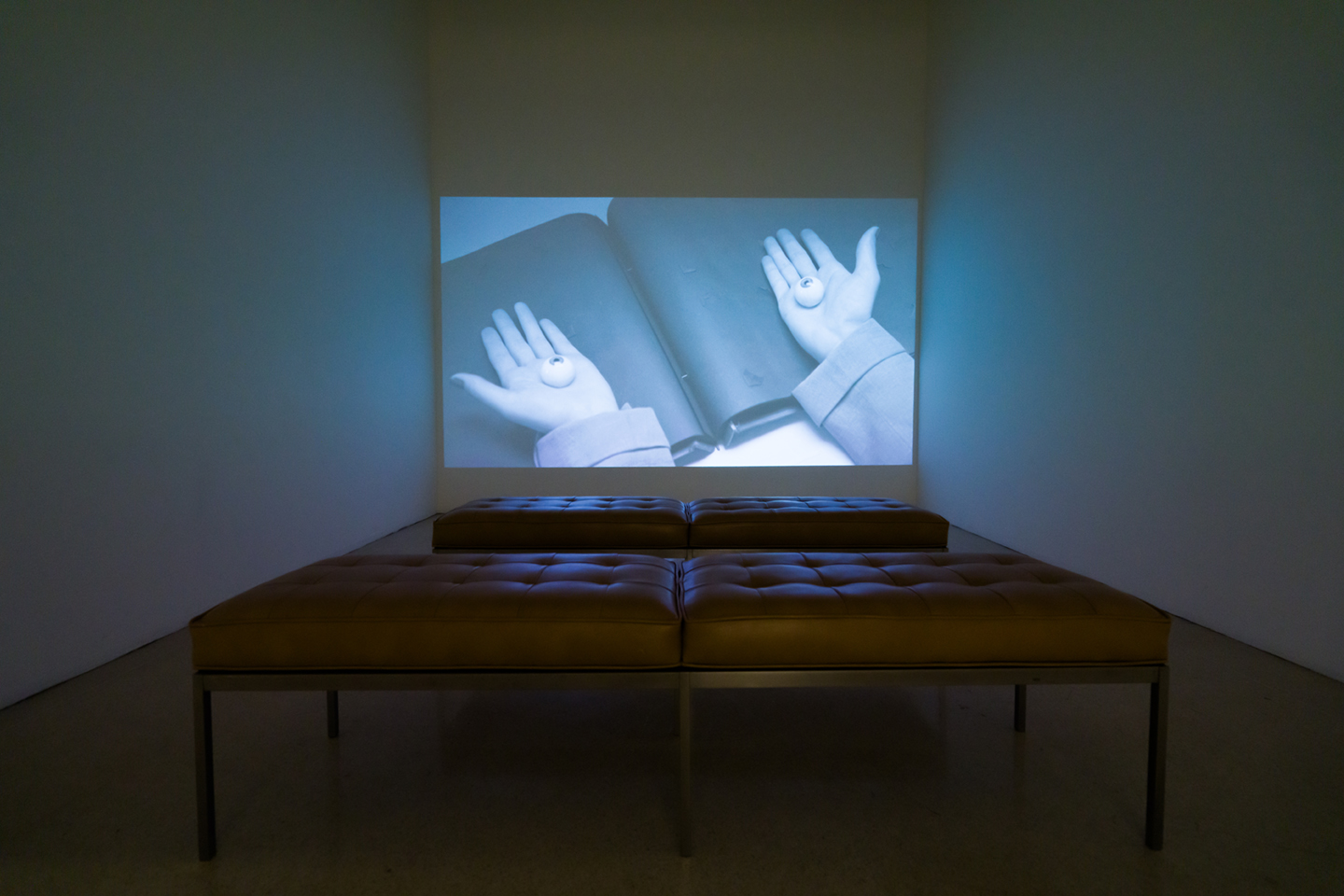
© Installation view of Aline Smithson’s film, “Le fardeau de la mémoire (The Burden of Memory) part of The Ephemeral Archive at the Brand Library & Art Center, Photo by Adam Kolkman
TLC: Can we talk about the short film?! The surreality! The way you used these absurdist metaphors to talk about the burden of preservation and the consumption of imagery (a woman literally eats photographs!) is so interesting. This is your first foray into filmmaking, correct? Can you talk about your inspiration and approach to making this film?
AS: Making the film was my favorite part of this whole experience. I think in my heart of hearts, I’ve always wanted to be a filmmaker–especially since I grew up a stone’s throw from Hollywood.
There is a room in the gallery that is dedicated to film and video and I took advantage of the opportunity. I jumped in and learned a lot very quickly. I have always been drawn to surreal films and “Le Fardeau de la Mémoire (The Burden of Memory)” is definitely a nod to Luis Buñuel and other surrealist films and there is a little hint of Hitchcock thrown in. I am so excited about filmmaking and hope to create more.
TLC: I hope you do. I would love to see more films by Aline Smithson! Would you say this show has changed you?
AS: It hasn’t changed me but it has expanded the way I think about an exhibition, using all the tools in the tool box to explore the subject matter. This exhibition allowed me to make several smaller bodies of work created specifically for exhibition and it allowed me to expand into new methodologies that include installation and film making. It has made me less interested in the 20 image portfolio that we’ve been locked into for decades.
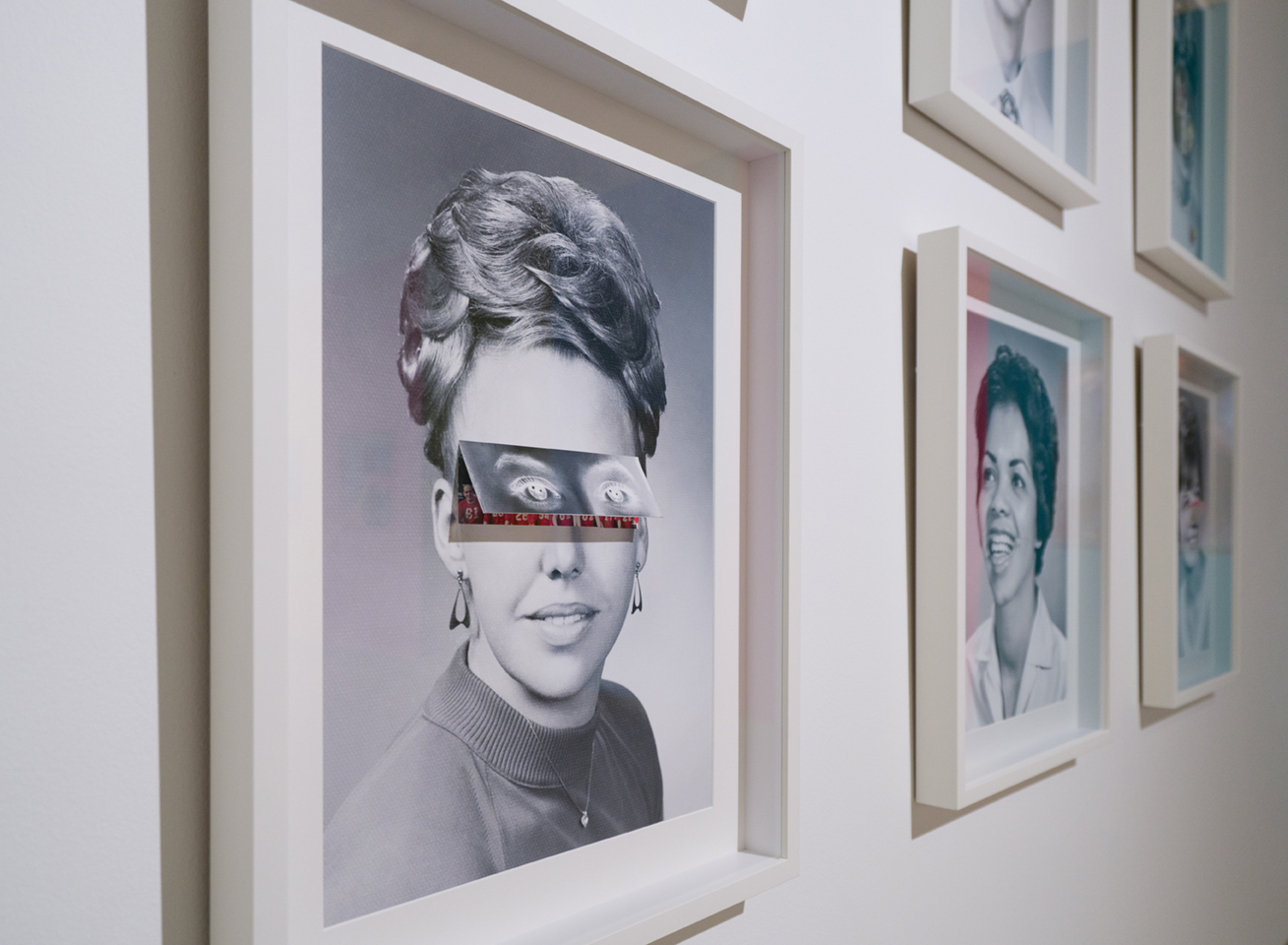
© Installation view of Football, from the Paradox of Portraiture from Aline Smithson’s The Ephemeral Archive at the Brand Library & Art Center, Photo by Adam Kolkman, Hand Collaged Archival Pigment Print
TLC: How do you see the role of photography evolving in the future in terms of memory preservation?
AS: Honestly, I think photography is moving away from being an archival tool for family legacies. We are no longer keeping photo albums and the tangible objects from our own histories (photos, letters, home movies, etc) are disappearing. Unless we wrestle with this issue now, AI will insinuate itself into the conversation. We may be approaching a future where we will question the truth in everything.
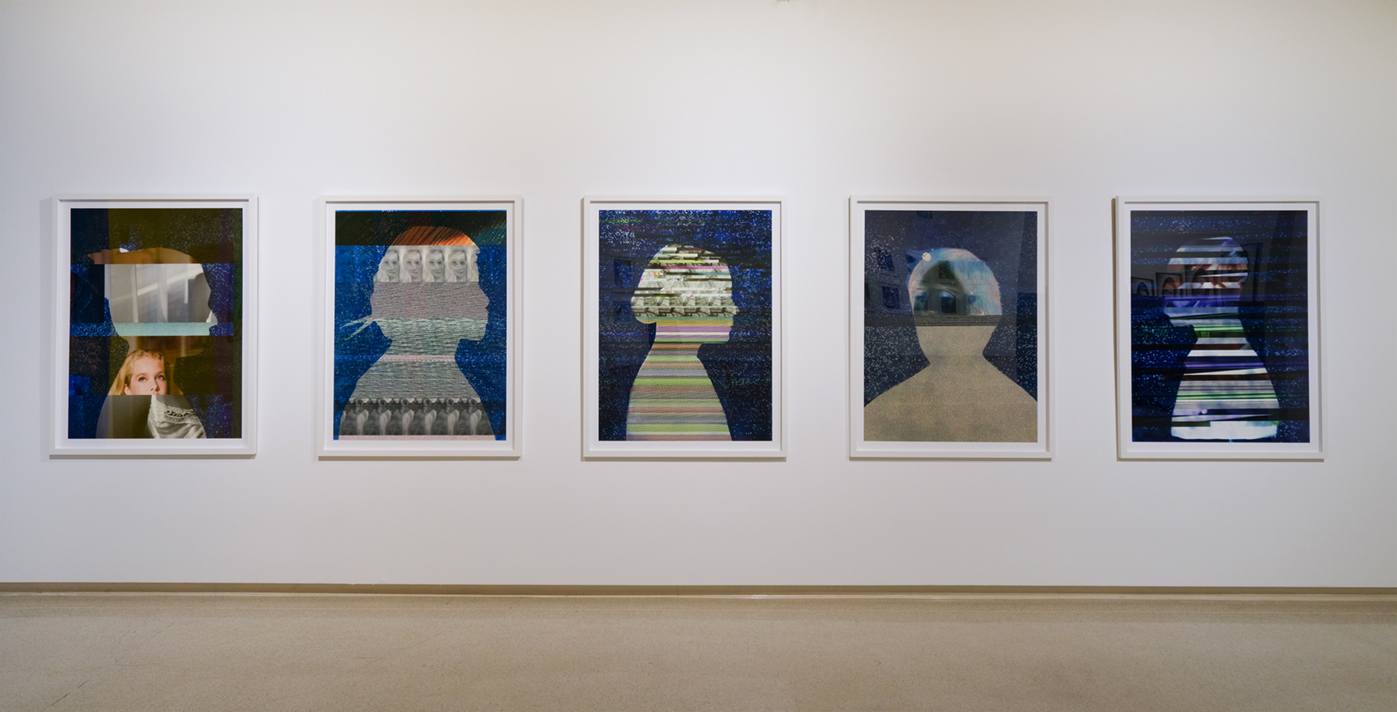
© Installation view of Fugue State Revisited from Aline Smithson’s The Ephemeral Archive at the Brand Library & Art Center, Photo by Adam Kolkman, Corrupted Analog Scans with Cyanotype overlay, 48″ x 36″
TLC: Yes. That future may be here already. Art can be a meaningful way to contend with hard truths, and your show is part of that conversation.
TLC: One last question, can you tell me about the award LACP established in your honor?
AS: It is The Aline Smithson Next Generation Award, and it will be given every year, for the next five years, to an emerging LA-based female identified artist. The award includes an exhibition at LACP (and curatorial mentorship), to open in December. There are no open applications, it is by nomination only.
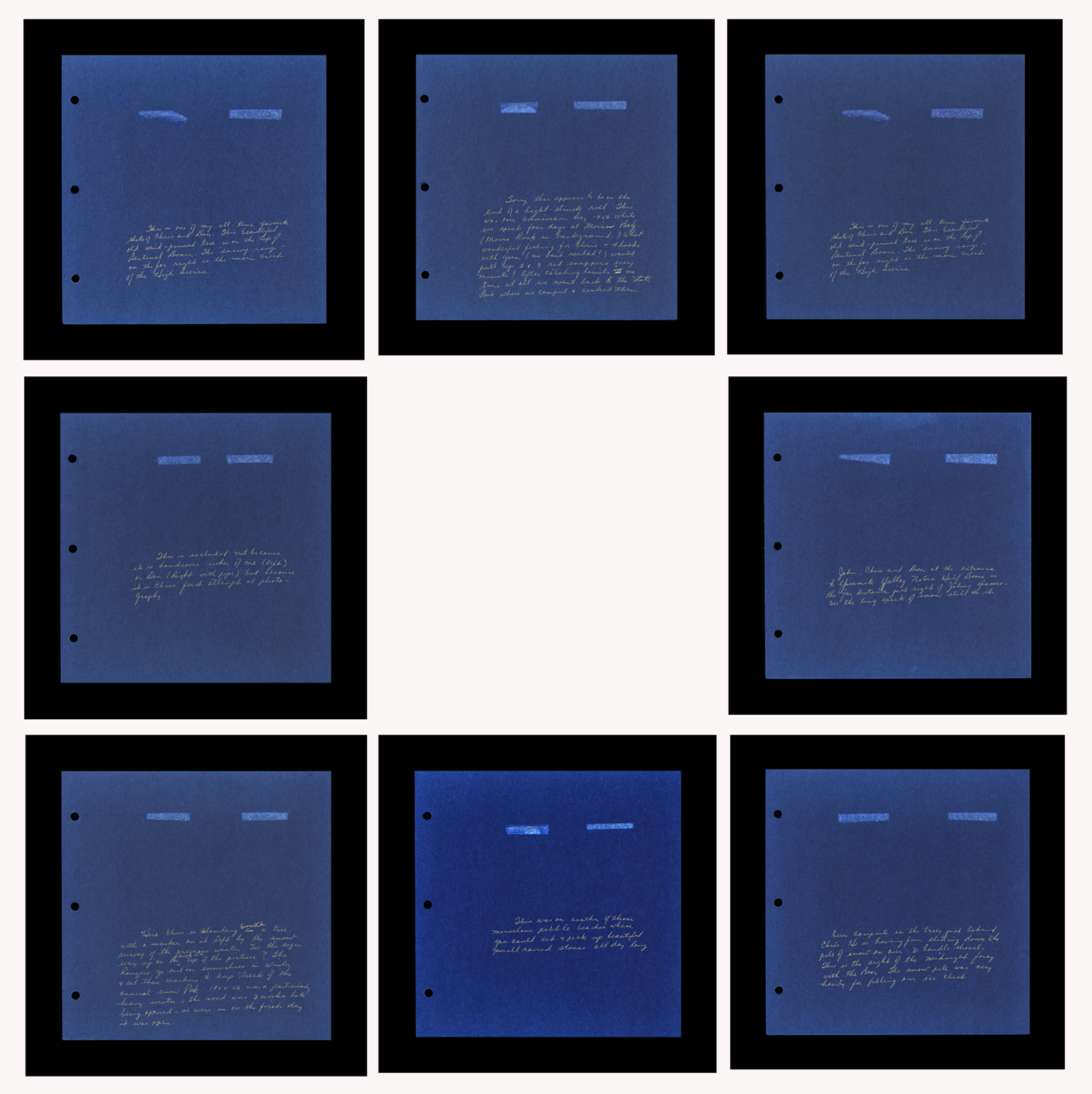
© Installation view of What Remains from Aline Smithson’s The Ephemeral Archive at the Brand Library & Art Center, Photo by Adam Kolkman, Archival Pigment Prints of Photo Album Pages that have lost their photos, with only the captions remaining. 18 x 18″
The Ephemeral Archive will be on view December 16, 2023 – February 24, 2024, at Brand Library & Art Center located at 1601 West Mountain Street Glendale, CA 91201. It is part of a larger exhibition, If Memory Serves, that we recently featured on Lenscratch.
Events around the exhibition:
Join Dr. Rotem Rozental, Executive Director and Chief Curator of the Los Angeles Center of Photography, for a walkthrough of the exhibition If Memory Serves: Photography, Recollections and Vision:
Curatorial Walkthrough January 19 | 11am – 1230pm
Curatorial Walkthrough January 25 | 6pm – 7:30pm
Curatorial Walkthrough February 2 | 11:00 am – 12:00 pm
Family Workshop in conjunction with Music Animated. February 3 | 11:30am-12:30pm, Instructor: Ford Lowcock.
Artist Panel is on February 10 | 2pm
Aline Smithson is an interdisciplinary artist, editor, and educator based in Los Angeles, California. Best known for her conceptual portraiture and a practice that uses humor and pathos to explore the performative potential of photography. Growing up in the shadow of Hollywood, her work is influenced by the elevated unreal. She received a BA in Art from the University of California at Santa Barbara and was accepted into the College of Creative Studies, studying under artists such as William Wegman, Allen Rupersburg, and Charles Garabedian. After a career as a New York Fashion Editor working alongside some the greats of fashion photography, Smithson returned to Los Angeles and her own artistic practice.
She has exhibited widely including over 40 solo shows at institutions such as the Griffin Museum of Photography, the Fort Collins Museum of Contemporary Art, the Shanghai, Lishui, and Pingyqo Festivals in China, The Rayko Photo Center in San Francisco, the Center of Fine Art Photography in Colorado, the Tagomago Gallery in Barcelona and Paris, and the Arnika Dawkins Gallery in Atlanta. In addition, her work is held in a number of public collections and her photographs have been featured in numerous publications including The New York Times, The New Yorker, PDN (cover), the PDN Photo Annual, Communication Arts Photo Annual, Harper’s, Eyemazing, Soura, Visura, Shots, Pozytyw, and Silvershotz magazines.
Smithson is the Founder and Editor- in-Chief of Lenscratch, a daily journal on photography. She has been an educator at the Los Angeles Center of Photography since 2001 and her teaching spans the globe. In 2012, Smithson received the Rising Star Award through the Griffin Museum of Photography for her contributions to the photographic community and also she received the prestigious Excellence in Teaching Award from CENTER. In 2014 and 2019, Smithson’s work was selected for the Critical Mass Top 50. Her work is held in significant public collections including the Museum of Fine Arts Houston, the Crocker Art Museum, and the Santa Barbara Art Museum.
In 2015, the Magenta Foundation published her first significant monograph, Self & Others: Portrait as Autobiography. In 2016, the Smithsonian Air and Space Museum commissioned Smithson to create a series of portraits for the upcoming Faces of Our Planet Exhibition. In the Fall of 2018 and again in 2019, her work was selected as a finalist in the Taylor Wessing Portrait Prize and exhibited at the National Portrait Gallery in London. In 2019, Kris Graves Projects commissioned her to create the book LOST II: Los Angeles that is now sold out. Peanut Press Books published her monograph, Fugue State, in Fall 2021. Her books are in the collections of the Getty Museum, the Los Angeles Contemporary Art Museum, the National Portrait Gallery, London, the Metropolitan Museum, the Guggenheim, the Museum of Modern Art, among others. In 2022, she was honored to be a Hasselblad Heroine. With the exception of her cell phone, she only shoots film.
Follow Aline Smithson on Instagram
Los Angeles Center of Photography (LACP) is a crucible that forges creative vision, insight, and experimentation into a vibrant photographic community that expresses the cultural and artistic crosscurrents that are the essence of Los Angeles. For over two decades, LACP, a 501(c)3 non-profit charitable organization, has been supporting, mentoring and promoting visual storytellers on their creative journeys, at all stages of life and career. Each year, LACP programs, organizes and offers the wider public over 150 exhibitions, classes, workshops, public programs, reviews and events each year, both online and in-person.
Follow LACP on Instagram
Brand Library & Art Center has been a cornerstone for the arts in Southern California since 1956. This unique public library focuses on visual arts and music and provides free services and programs for a diverse community, including a collection of over 110,000 items, subject specialist librarians, exhibitions, concerts, lectures, dance performances, films, and hands-on craft programs for children and adults. Always evolving, Brand Library continues to develop innovative programs, services and collections to serve an ever-widening public interested in the arts. Brand Library & Art Center is a branch of the City of Glendale Library, Arts & Culture Department.
Tracy L Chandler is a photographer based in Los Angeles, CA.
Follow Tracy L Chandler on Instagram
Posts on Lenscratch may not be reproduced without the permission of the Lenscratch staff and the photographer.
Recommended
-
The 2024 Lenscratch 3rd Place Student Prize Winner: Mehrdad MirzaieJuly 24th, 2024
-
One Year Later: Nykelle DeVivoJuly 19th, 2024
-
One Year Later: Anna RottyJuly 18th, 2024
-
The Paula Riff Award: Minwoo LeeJuly 17th, 2024
-
Anastasia Sierra and Carrie Usmar: Talking MotherhoodJuly 16th, 2024

